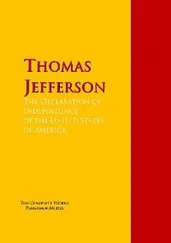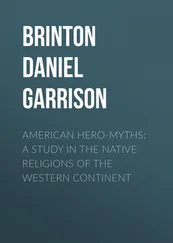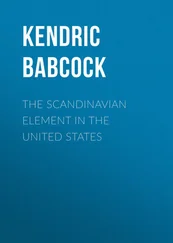Hubert Bancroft - The Native Races [of the Pacific states], Volume 5, Primitive History
Здесь есть возможность читать онлайн «Hubert Bancroft - The Native Races [of the Pacific states], Volume 5, Primitive History» — ознакомительный отрывок электронной книги совершенно бесплатно, а после прочтения отрывка купить полную версию. В некоторых случаях можно слушать аудио, скачать через торрент в формате fb2 и присутствует краткое содержание. Жанр: foreign_antique, foreign_prose, на английском языке. Описание произведения, (предисловие) а так же отзывы посетителей доступны на портале библиотеки ЛибКат.
- Название:The Native Races [of the Pacific states], Volume 5, Primitive History
- Автор:
- Жанр:
- Год:неизвестен
- ISBN:нет данных
- Рейтинг книги:5 / 5. Голосов: 1
-
Избранное:Добавить в избранное
- Отзывы:
-
Ваша оценка:
- 100
- 1
- 2
- 3
- 4
- 5
The Native Races [of the Pacific states], Volume 5, Primitive History: краткое содержание, описание и аннотация
Предлагаем к чтению аннотацию, описание, краткое содержание или предисловие (зависит от того, что написал сам автор книги «The Native Races [of the Pacific states], Volume 5, Primitive History»). Если вы не нашли необходимую информацию о книге — напишите в комментариях, мы постараемся отыскать её.
The Native Races [of the Pacific states], Volume 5, Primitive History — читать онлайн ознакомительный отрывок
Ниже представлен текст книги, разбитый по страницам. Система сохранения места последней прочитанной страницы, позволяет с удобством читать онлайн бесплатно книгу «The Native Races [of the Pacific states], Volume 5, Primitive History», без необходимости каждый раз заново искать на чём Вы остановились. Поставьте закладку, и сможете в любой момент перейти на страницу, на которой закончили чтение.
Интервал:
Закладка:
62
Following are a few points of Lord Kingsborough's elaborate argument: 'How truly surprising it is to find that the Mexicans, who seem to have been quite unacquainted with the doctrines of the migration of the soul and the metempsychosis, should have believed in the incarnation of the only son of their supreme god Tonacatecutle. For Mexican mythology speaking of no other son of that god except Quecalcoatle, who was born of Chimalman the Virgin of Tula, without connection with man, and by his breath alone, (by which may be signified his word or his will, announced to Chimalman by word of mouth of the celestial messenger, whom he dispatched to inform her that she should conceive a son,) it must be presumed that Quecalcoatle was his only son. Other arguments might be adduced to show, that the Mexicans believed that Quecalcoatle was both god and man, that he had previously to his incarnation existed from all eternity, that he had created both the world and man, that he descended from heaven to reform the world by penance, that he was born with the perfect use of reason, that he preached a new law, and, being king of Tula, was crucified for the sins of mankind, as is obscurely insinuated by the interpreter of the Vatican Codex, plainly declared in the traditions of Yucatan, and mysteriously represented in the Mexican paintings.' If the promise of the angel Gabriel to the Virgin Mary, – The Holy Ghost shall come upon thee, and the power of the Highest shall overshadow thee: therefore also that holy thing which shall be born of thee shall be called the Son of God – be couched in the language of ancient prophecy, 'it is not improbable that the head of the dragon which forms the crest of three of the female figures (in one of the Mexican pieces of sculpture), as it may also be presumed it did of the fourth when entire, (if it be not a symbol which Chimalman borrowed from her son's name ,) was intended to denote that she had been overshadowed by the power of Huitzilopuchtli, whose device, as we are informed by Sahagun in the first chapter of the first book of his History of New Spain, was the head of a dragon.' Kingsborough's Mex. Antiq. , vol. vi., pp. 507-8. See, more especially, his elaborate discussion of Quetzalcoatl's crucifixion and identity with the Messiah, vol. viii., pp. 5-51. As we have seen in a preceding volume, Quetzalcoatl is compared with the heathen deities of the old world, as well as with the Messiah of the Christians. See vol. iii., chap. vii.
63
See vol. iii., p. 450, et seq.
64
Though the presumption may be in favor of communication by Bering Strait, yet the phenomena in the present state of our knowledge, favors the Aleutian route. Latham's Comp. Phil. , p. 384. The Aleutian archipelago is 'probably the main route by which the old continent must have peopled the new. Behring's Straits, though … they were doubtless one channel of communication, just as certainly as if their place had been occupied by solid land, were yet, in all likelihood, only of subordinate utility in the premises, when compared with the more accessible and commodious bridge towards the south.' Simpson's Nar. , vol. ii., p. 225. 'There is no improbability that the early Asiatics reached the western shores of America through the islands of the Pacific.' The trace of the progress of the red and partially civilized man from Oriental Asia was left on these islands. Willson's Amer. Hist. , pp. 92-3. The first discoveries were made along the coast and from island to island; the American immigrants would have come by the Aleutian Isles. Brasseur de Bourbourg , Hist. Nat. Civ. , tom. i., p. 10. To come by Aleutian islands presents not nearly so great a difficulty as the migrations among Pacific Islands. Prescott's Mex. , vol. iii., p. 374. Immigration from Asia 'appears to have taken place mostly by the Aleuthian islands.' Smith's Human Species , p. 238.
65
Some of the early writers were of course ignorant of the existence of any strait separating America from Asia; thus Acosta – who dares not assume, in opposition to the Bible, that the flood did not extend to America, or that a new creation took place there – accounts for the great variety of animals by supposing that the new continent is in close proximity to if not actually connected with the Old World at its northern and southern ends, and that the people and animals saved in the ark spread gradually by these routes over the whole land. Hist. de las Ynd. , pp. 68-73, 81; West und Ost Indischer Lustgart , pt i., pp. 8-9. See also Montanus , Nieuwe Weereld , pp. 38-42; Gottfriedt , Newe Welt , p. 4; Villagutierre , Hist. Conq. Itza , pp. 26-8. Clavigero produces instances to show that upheavals, engulfings, and separations of land have been quite common, and thinks that American traditions of destructions refer to such disasters. He also shows that certain animals could have passed only by a tropic, others only by an arctic road. He accordingly supposes that America was formerly connected with Africa at the latitude of the Cape Verde islands, with Asia in the north, and perhaps with Europe by Greenland. Storia Ant. del Messico , tom. iv., pp. 27-44. The great objection to a migration by way of the cold latitude of Bering Strait, says a writer in the Historical Magazine , vol. i., p. 285, is that tropic animals never could have passed that way. He apparently rejects or has never heard of the theory of change in zones. See farther, concerning joining of continents, and communication by Bering Strait: Warden , Recherches , pp. 202, 221; Humboldt , Exam. Crit. , tom. ii., p. 68, et seq.; Snowden's Hist. N. and S. Amer. , p. 198; Taylor , in Cal. Farmer , Sept. 12, 1862; Priest's Amer. Antiq. , pp. 62-3, 82-3; Valois , Mexique , p. 197; Adair's Amer. Ind. , p. 219. Bradford denies emphatically that there ever was any connection between America and Asia. 'It has been supposed,' he writes, 'that a vast tract of land, now submerged beneath the waters of the Pacific Ocean, once connected Asia and America… The arguments in favor of this opinion are predicated upon that portion of the Scriptures, relating to the "division" of the earth in the days of Peleg, which is thought to indicate a physical division, – upon the analogies between the Peruvians, Mexicans and Polynesians … and upon the difficulty of accounting in any other manner for the presence of some kinds of animals in America.' After demolishing these three bases of opinion, he adds: 'this conjectured terrestrial communication never existed, a conclusion substantiated, in some measure, by geological testimony.' Amer. Antiq. , pp. 222-8. Mr Bradford's argument, in addition to being thoughtful and ingenious, is supported by facts, and will amply repay a perusal.
66
Exam. Crit. , tom. ii., p. 68.
67
Mex. , vol. iii., p. 418.
68
Prehist. Man , p. 615.
69
Human Species , p. 238.
70
Rel., 2de expéd. , p. 28.
71
Peruvian Antiq. , p. 24. America was probably first peopled from Asia, but the memory of that ancient migration was lost. Asia was utterly unknown to the ancient Mexicans. The original seats of the Chichimecs were, as they thought, not far to the north-west. They placed Aztlan not in a remote country, but near Michoacan. Gallatin , in Amer. Ethno. Soc., Transact. , vol. i., pp. 158-9, 174. There are strong resemblances in all things with Asiatic nations; less in language than other respects, but more with Asia than with any other part of the world. Anatomical resemblances point the same way. Carbajal Espinosa , Hist. Mex. , tom. i., pp. 196-203. The Americans most probably came from Asia soon after the dispersion and confusion of tongues; but there has been found no clear notice among them of Asia, or of their passage to this continent. Nor in Asia of any such migration. The Mexican histories do not probably go so far back. Venegas , Noticia de la Cal. , tom. i., pp. 72-3. If a congregation of twelve representatives from Malacca, China, Japan, Mongolia, Sandwich Islands, Chili, Peru, Brazil, Chickasaws, Comanches, &c., were dressed alike, or undressed and unshaven, the most skillful anatomist could not from their appearance separate them. Fontaine's How the World was Peopled , pp. 147-9, 244-5. The people of Asia seem to have been the only men who could teach the Mexicans and Peruvians to make bronze, and could not teach them to smelt and work iron, one thousand or one thousand five hundred years before the Spanish Conquest. Tylor's Researches , p. 209. It is almost proved that long before Columbus, Northern India, China, Corea, and Tartary, had communication with America. Chateaubriand , Lettre aux Auteurs , p. 87. See also: Smithsonian Rept. , 1866, p. 345; Veytia , Hist. Ant. Mej. , tom. i., p. 20; Brasseur de Bourbourg , Hist. Nat. Civ. , tom. i., pp. 23-4; Simpson's Nar. , vol. i., p. 190; Gregg's Com. Prairies , vol. ii., pp. 250-1; Macfie's Vanc. Isl. , pp. 426-7; Saint-Amant , Voyages , p. 245; Malte-Brun , Précis de la Géog. , tom. vi., pp. 290, 295-6; Warden , Recherches , pp. 118-36; Macgregor's Progress of Amer. , vol. i., p. 24; Mühlenpfordt , Mejico , tom. i., p. 230; Dodge , in Ind. Aff. Rept. , 1869, p. 590; Whymper's Alaska , pp. 278-85; Prichard's Nat. Hist. Man , vol. ii., p. 519; Mitchill , in Amer. Antiq. Soc., Transact. , vol. i., pp. 325-32; Vigne's Travels , vol. ii., p. 36; Latham's Man and his Migrations , p. 122; Sampson , in Hist. Mag. , vol. v., p. 213. Robertson's Hist. Amer. , vol. i., pp. 280-1; Snowden's Hist. N. and S. Amer. , p. 200; Stratton's Mound-Builders , MS.; Bradford's Amer. Antiq. , pp. 208, 215-16, 432; Pickering's Races of Man , in U. S. Ex. Ex. , vol. ix., pp. 287-8; Carver's Trav. , pp. 209-13; Kennedy's Probable Origin ; Davis' Discovery of New Eng. ; Hellwald , in Smithsonian Rept. , 1866, p. 334. Herrera argued that as there were no natives in America of a color similar to those of the politer nations of Europe, they must be of Asiatic origin; that it is unreasonable to suppose them to have been driven thither by stress of weather; that the natives for a long time had no king, therefore no historiographer, therefore they are not to be believed in this statement, or in any other. The clear conclusions drawn from these pointed arguments is, that the Indian race descended from men who reached America by the nearness of the land. 'Y asi mas verisimilmente se concluye que la generacion, y poblacion de los Indios, ha procedido de hombres que passaron a las Indias Ocidentales, por la vezindad de la tierra, y se fueron estendiendo poco a poco;' but from whence they came, or by what route the royal historiographer offers no conjecture. Hist. Gen. , dec. i., lib. i., cap. vi.
Читать дальшеИнтервал:
Закладка:
Похожие книги на «The Native Races [of the Pacific states], Volume 5, Primitive History»
Представляем Вашему вниманию похожие книги на «The Native Races [of the Pacific states], Volume 5, Primitive History» списком для выбора. Мы отобрали схожую по названию и смыслу литературу в надежде предоставить читателям больше вариантов отыскать новые, интересные, ещё непрочитанные произведения.
Обсуждение, отзывы о книге «The Native Races [of the Pacific states], Volume 5, Primitive History» и просто собственные мнения читателей. Оставьте ваши комментарии, напишите, что Вы думаете о произведении, его смысле или главных героях. Укажите что конкретно понравилось, а что нет, и почему Вы так считаете.
![Hubert Bancroft The Native Races [of the Pacific states], Volume 5, Primitive History обложка книги](/books/749157/hubert-bancroft-the-native-races-of-the-pacific-s-cover.webp)









![Hubert Bancroft - The Native Races [of the Pacific states], Volume 1, Wild Tribes](/books/750126/hubert-bancroft-the-native-races-of-the-pacific-s-thumb.webp)

